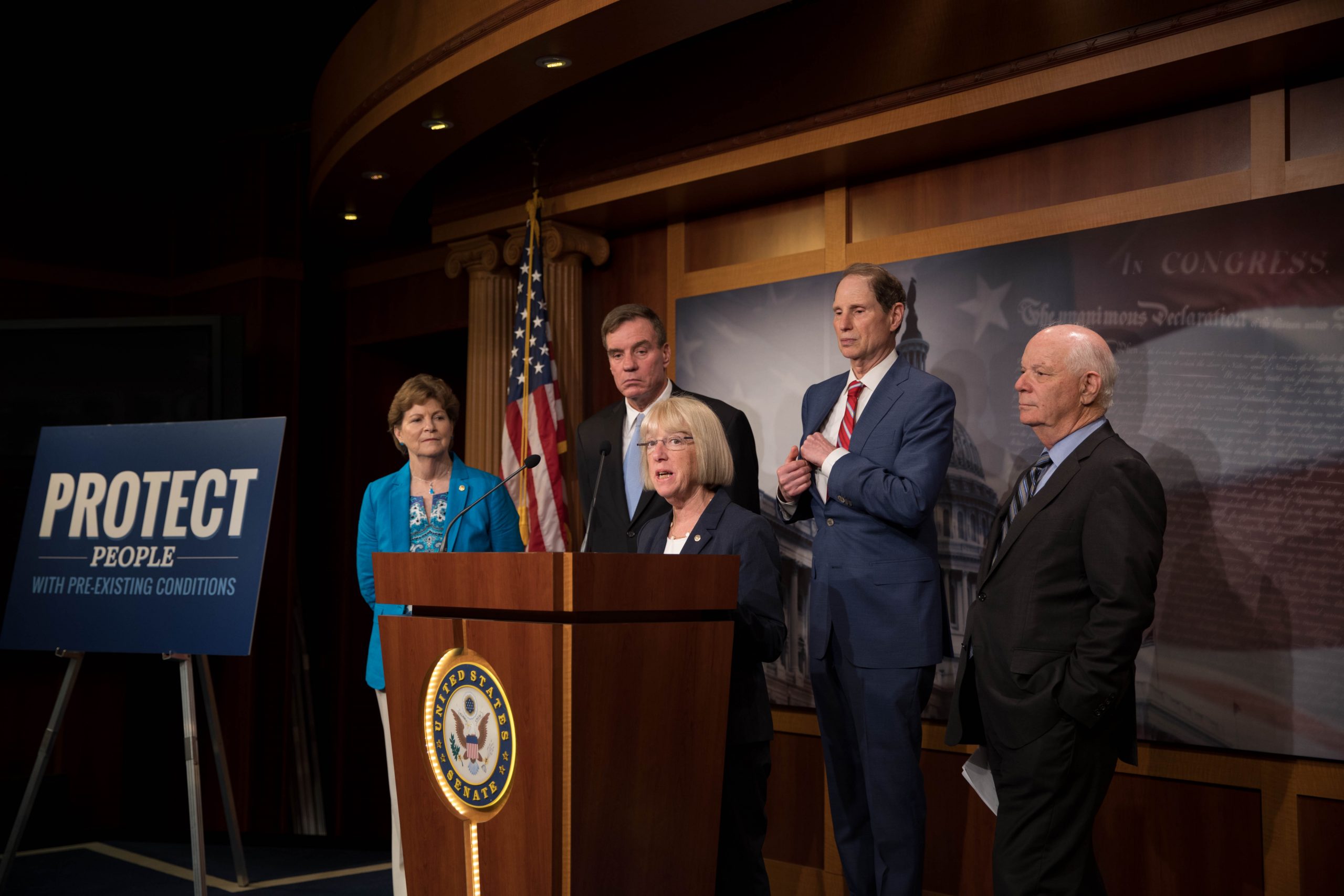The Digital Equity Act would be a historic investment in digital equity for local communities—focusing on key needs outside of just broadband deployment. The funding from the Digital Equity Act grants could be used for anything from laptops and devices for students to digital literacy classes for seniors at a local library
Senator Murray first introduced the Digital Equity Act in 2019, well before the COVID pandemic, and since then, she has worked hard to build a robust coalition of 100+ organizations to secure strong bipartisan consensus and support for the bill.
(Washington, D.C.) – In case you missed it, the recently passed bipartisan Infrastructure Investment and Jobs Act includes U.S. Senator Patty Murray’s (D-WA) landmark Digital Equity Act, which will help close the digital divide by funding activities that seek to provide individuals and communities with the skills, supports, and technologies necessary to take full advantage of a broadband internet connection once they have access to one.
The Digital Equity Act would create new federal investments targeted toward a diverse array of projects at the state and local level that promote “digital equity”— a concept defined by the National Digital Inclusion Alliance as the, “condition in which all individuals and communities have the information technology capacity needed for full participation in our society, democracy and economy.”
Notably, Senator Murray worked to secure a significant funding increase in the infrastructure bill from $1.3 billion to $2.75 billion for the Digital Equity Act. The Digital Equity Act strengthens federal support for efforts to help ensure students, families, and workers have the information technology capacity needed to fully participate in society by establishing two grant programs to be administered by the National Telecommunications and Information Administration (NTIA) to promote digital equity nationwide:
- Building Capacity within States through Formula Grants: Creates a five-year $300 million per year formula grant program for all 50 States, the District of Columbia, and Puerto Rico to fund the creation and implementation of comprehensive digital equity plans in each State.
- Spurring Targeted Action through Competitive Grants: Creates a five-year $250 million per year competitive grant program to support digital inclusion projects undertaken by individual groups, coalitions, and/or communities of interest.
- Supporting Research and Evidence-Based Policymaking: Tasks NTIA with evaluating digital inclusion efforts and providing policymakers at the local, state, and federal levels with detailed information about which projects are most effective.
The Digital Equity Act would be a historic investment in digital equity for local communities–focusing on key needs outside of just broadband deployment. The funding from the Digital Equity Act grants could be used for anything from laptops and devices for students to digital literacy classes for seniors at a local library. Senator Murray first introduced the Digital Equity Act in 2019, well before the COVID pandemic, and since then, she has worked hard to build a robust coalition of 100+ organizations to secure strong bipartisan consensus and support for the bill.
For more information on the broadband provisions in the bipartisan infrastructure bill and what they mean for Washington state, see HERE.
See recent coverage of Senator Murray’s Digital Equity Act from the past year below:
New York Times: Broadband in the infrastructure bill: Taking aim at the digital divide
Democrats also fought to secure the inclusion of the Digital Equity Act, legislation drafted by Senator Patty Murray, Democrat of Washington, to encourage states to develop comprehensive plans to ensure access to high-speed internet is distributed equitably among traditionally underserved groups and educate them about how to access digital resources.
TIME: The Senate Just Passed a Massive Infrastructure Bill. Here’s What’s in It
The agreement also passes the Digital Equity Act, legislation drafted by Sen. Patty Murray, a Democrat from Washington, to authorize funding for digital inclusion programs, such as Internet education and skills training for low-income populations.
Washington Post: The Senate is right: Broadband is infrastructure. Now it’s time to make history.
Also included is Sen. Patty Murray’s (D-Wash.) Digital Equity Act, which pushes beyond the traditional boundaries of broadband policy to teach underserved groups, from racial and ethnic minorities to veterans to people with disabilities, to actually use the Internet.
NBC News: Broadband bipartisanship? Senators introduce digital equity push
Murray and Portman plan to push for their legislation to be included in whatever infrastructure bill may emerge…Murray introduced similar legislation in 2019 without Republicans signing on. This time, Portman’s support makes it bipartisan, an important factor in the 50-50 divided Senate.
Seattle Times: Making digital equity a reality
As President Joe Biden continues pushing for massive federal investments in infrastructure, Murray told a Seattle Times political reporter she was “very optimistic” her plan will be included in any final proposal. It should be. When Murray first introduced the idea two years ago, many people considered the digital divide a nuisance — if they considered it at all. But last year proved that access to broadband is essential to the full participation in our democratic society, whether attending a virtual city council meeting, logging in to remote work or schooling, accessing health care via telemedicine or conducting other business.
Calling a strong, affordable internet connection for every American a “must-have,” Sen. Patty Murray, was joined by Microsoft’s Brad Smith and other digital access advocates to push for additional federal spending to improve broadband access and affordability across the country.


